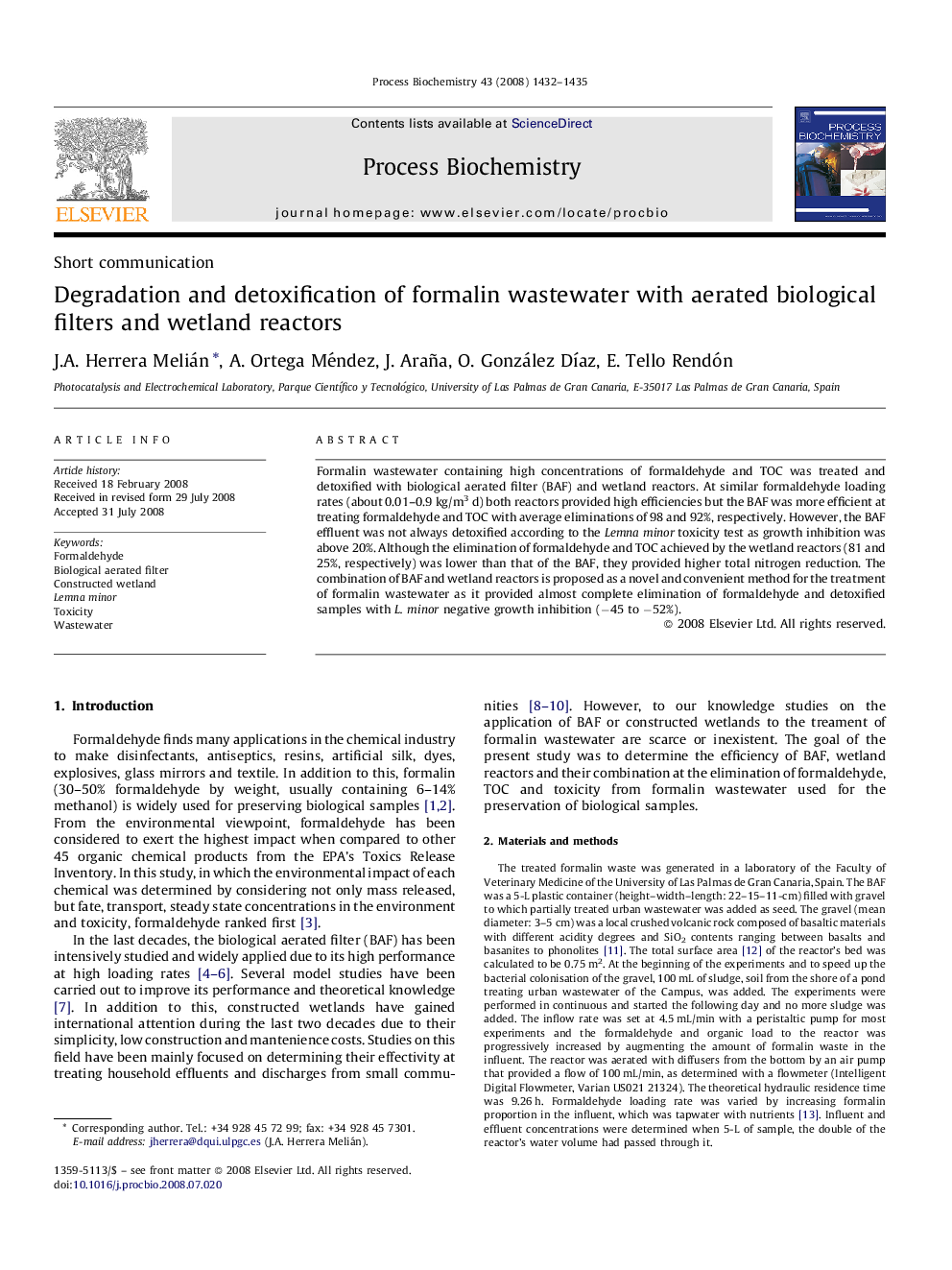| Article ID | Journal | Published Year | Pages | File Type |
|---|---|---|---|---|
| 35759 | Process Biochemistry | 2008 | 4 Pages |
Formalin wastewater containing high concentrations of formaldehyde and TOC was treated and detoxified with biological aerated filter (BAF) and wetland reactors. At similar formaldehyde loading rates (about 0.01–0.9 kg/m3 d) both reactors provided high efficiencies but the BAF was more efficient at treating formaldehyde and TOC with average eliminations of 98 and 92%, respectively. However, the BAF effluent was not always detoxified according to the Lemna minor toxicity test as growth inhibition was above 20%. Although the elimination of formaldehyde and TOC achieved by the wetland reactors (81 and 25%, respectively) was lower than that of the BAF, they provided higher total nitrogen reduction. The combination of BAF and wetland reactors is proposed as a novel and convenient method for the treatment of formalin wastewater as it provided almost complete elimination of formaldehyde and detoxified samples with L. minor negative growth inhibition (−45 to −52%).
